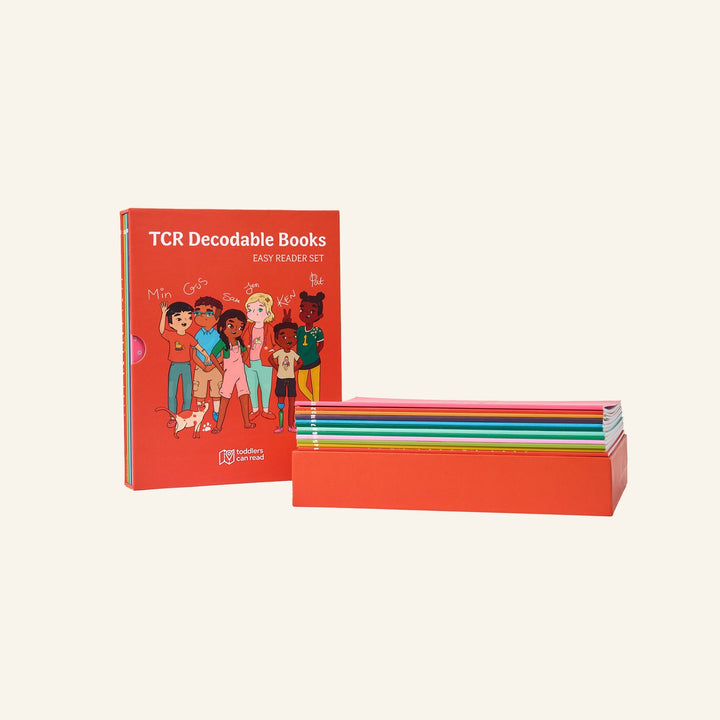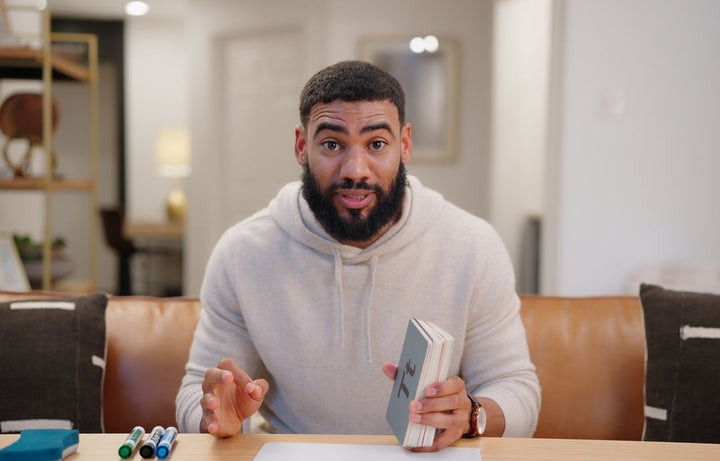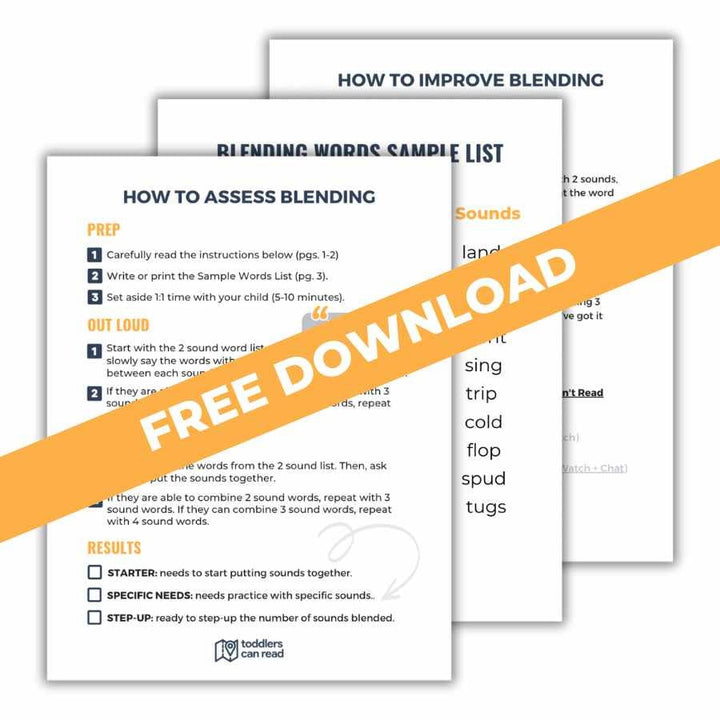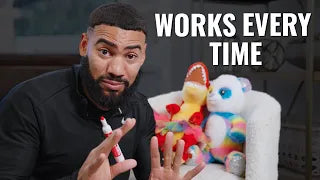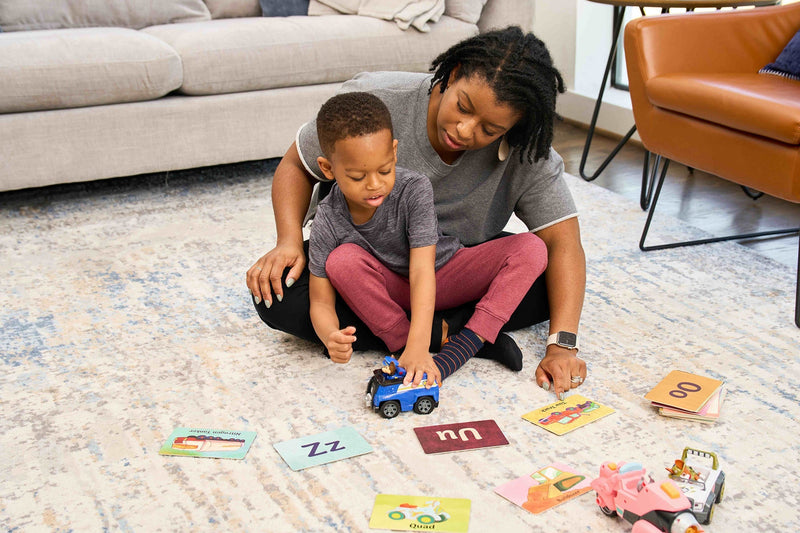You probably know this by now, but most kids suck at spelling.
And it can feel incredibly frustrating when we spend hours with our children doing homework and memorizing spelling lists, only to have them forget those words later or give up when they get to words they haven't practiced.
But thankfully, there's an easy, 3-step process that you can use to help improve your little one's spelling. I've used these steps with former students, families I've worked with, and my own son (he's 4 and spells well). So I can tell you with confidence, this process works.
So let's jump into these 3 steps so you can start to experience success with your little one as well. Go ahead and download my free spelling cheat so you'll have these steps in your inbox.
Step #1: Find their number.
And by number, I mean the number of sounds they are able to hear in each word.
This might sound basic, but most kids struggle with spelling because they can't actually hear each of the sounds in a word. And if they can't hear every sound, they won't be able to write every sound.
For example, if I said the word CAT, you (as an adult) would hear 3 sounds: C-A-T.
But the same might not be true for your little one. They may only hear 2 sounds, like C-T or A-T.
So you'll start by finding some words to say to your little one. Then when you say the word, ask them what sounds they hear.
To find their number, simply count the number of sounds they hear in each word (you might want to try this with a few different words to make sure you get accurate numbers). So using our example from before, if a child hears C-A when you say CAT, that child can hear 2 sounds.
Your kid's number might be 1, 2, 3, or 4 sounds. It might even be higher. But once you know their number, you can start practicing the next number with them.. So if your child hears C-A when you say CAT, their number is 2, so you'll start by practicing 3 sound words.
When they've mastered words with one more sound than they could hear before, you'll continue adding one more sound at a time.
Step #2: Find out which sounds they struggle with.
After you've figured out how many sounds your child can hear, you need to figure out which specific sounds/patterns (i.e. PHONICS) are hard for them to write.
And you can do this by asking them to write a list of words (start with very simple words and get progressively harder). Your goal is for them to make mistakes in their spelling so you know which sounds are the hardest for them to get down on paper. So once they've made a few mistakes, stop there, and make a note of which phonics sounds they are missing the most often.
The sounds they struggle with will vary from child to child. For many kids, it's short vowel sounds. For your kid, it might be long vowel sounds or letters that make multiple sounds. The important thing is that you figure out which phonics sounds your little one needs to work on.
For example: let's say that you ask your child to write PET and they write PAT. This tells you that they probably struggle with short vowel sounds and need to work on the /a/ and /e/ sounds.
Another example: if you ask them to write ATE and they write AT, this tells you they probably need to work on long-vowel /ā/ spelled a_e.
The more specific you can get about which phonics sounds they're struggling with, the better.
And once you know which sounds and patterns need practice, you'll pick just a few at a time to work on. Don't try to fix everything at once. Focus on a couple of these phonics sounds at a time with them, while also adding to the number of sounds (step 1) your little one can hear in each word.
If you're more of a visual learner, this is going to look something like this:
Step #3: Practice every day.
This is the most important step and the key to real progress. Knowing the number of sounds they can hear (step 1) and which sounds they're struggling with (step 2) is great. But that knowledge alone isn't going to help them improve; you've got to put in the work.
Because there's no guarantee it's going to improve any other way.
Most children will go to school and be given the same spelling list as every other kid. Do you think that spelling list is going to be focused on building the number of sounds your little one can read(step 1) or the specific sounds they need help with (step 2)?
I can tell you right now, the answer is no.
And if your little one is in a class of 25 kids, there's a good chance they won't be getting any 1:1 time with the teacher (unless they're very behind). Their small group time (if they have it) will also be limited. The school might have them flat out memorizing these words, which you know by now isn't actually going to actually help them improve their spelling.
But at home, you can give them 5, or 10, or 20 words a day that are targeted towards their specific needs. And the practice doesn't have to take up a lot of time. Just a few minutes can make a ton of difference.
Because the key is consistency. This is the practice that's going to push your child forward and lead to the kind of results you want to see.
You can do this.
From me to you, parent to parent, and as someone who struggled a lot with spelling as a kid: I know how challenging this seems. But the reason I created courses geared towards parents is because I know how impactful parents can be in their children's education and I know you can do this.
If you need more support getting started teaching your little one, I have a free Beginning Reading Workshop with a live chat where you can talk to me directly. In the meantime, I hope this blog and the spelling cheat sheet has given you a little more confidence in working with your child to improve their spelling!


